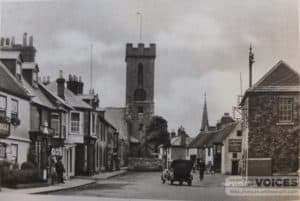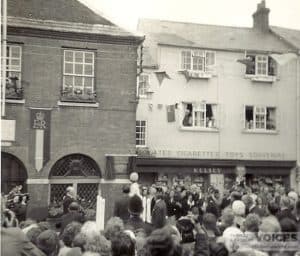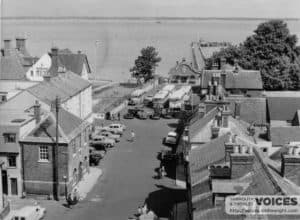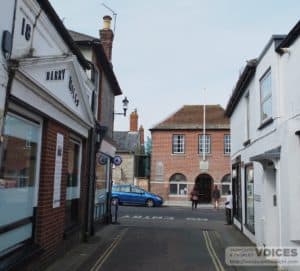WWII
In 1938, for Yarmouth, like other communities, life changed; we were preparing for war. Everyone was fitted with gas masks and volunteers were called for A.R.P. duties (Air Raid Precautions) and for the L.D.V. (Local Defence Volunteers), later known as the Home Guard. Conscription for the forces began with what were known as the “Militia Boys” and they all did us proud. Yarmouth at that time was a very close community, families and their forbears having lived here for a very long time. Our young men found it hard being taken from working as butchers, bakers etc. to, after a short training, becoming a fighting force.

Town Hall sandbagged 1939 photo: Eileen Smith
The A.R.P. had their headquarters at the well- sandbagged Town Hall to begin with, but moved later to the Royal Solent Yacht Club where frequent blood-doning sessions were held. The A.R.P. consisted of telephonists, wardens, First Aid and ambulance drivers. The ambulance was a laundry van, from the laundry in Heytesbury Road which was the main employer of women in Yarmouth, with some male drivers. Rescue practices were held at the Mill.
Some men and women went to work in Aircraft factories at Freshwater and Cowes. Several girls joined the forces, and women took over from the men by driving delivery vans.
from an article by Joy Lawry nee Cotton b 1922








